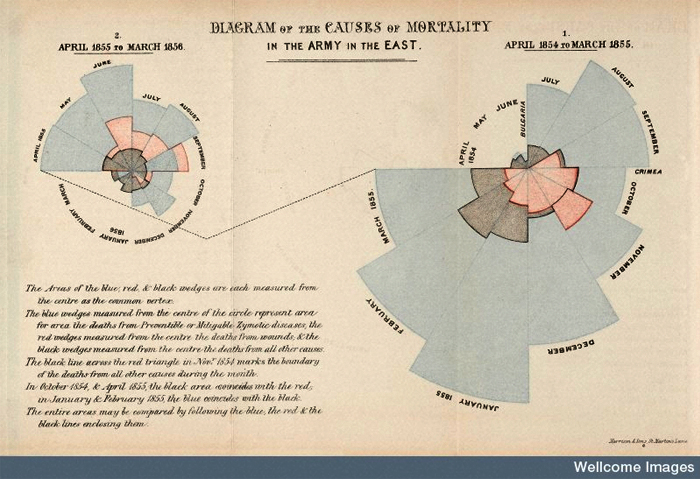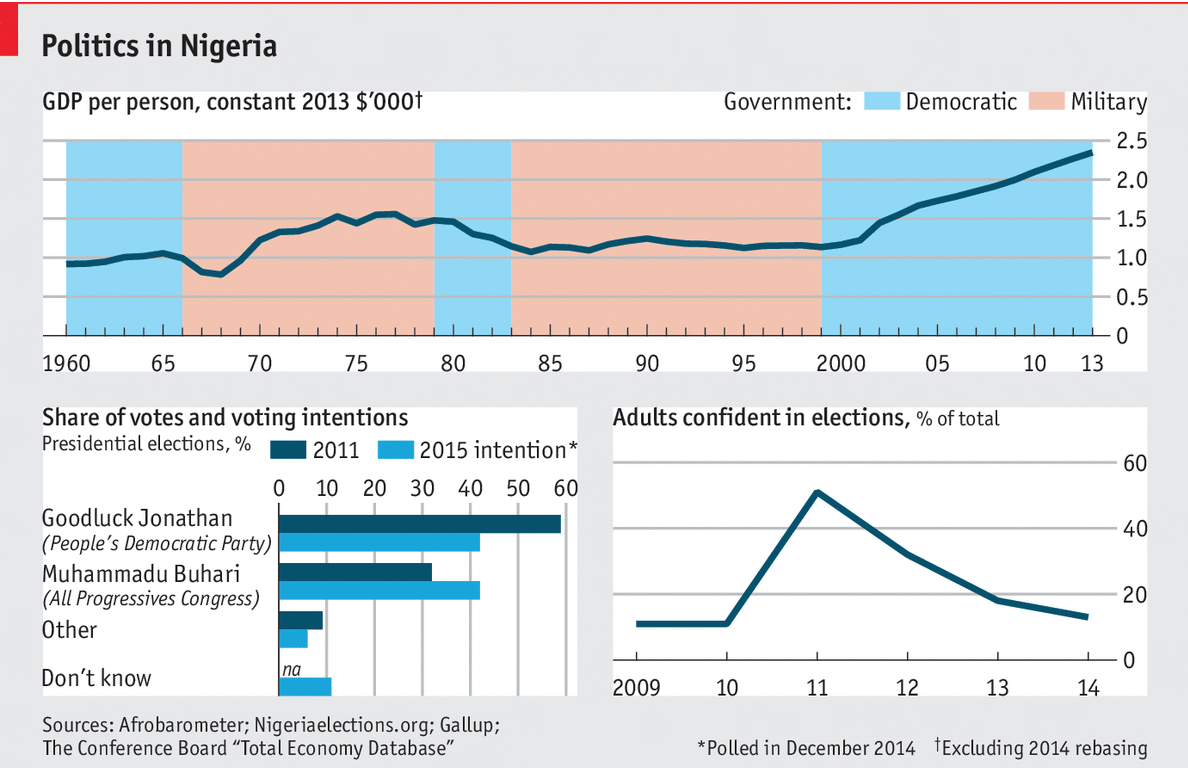But that doesn't mean we shouldn’t try.
Historically, public health advocates have long understood the importance of disseminating visual evidence in an effort to reduce the spread of disease. Florence Nightingale did this brilliantly in the nineteenth century, with a chart showing that death tolls during the Crimean War had more to do with poor health conditions in the camps than with gunfire. Surely we’ve made progress since then?

Source: The Wellcome Library
Perhaps not. The World Health Organization reports that South Africa still holds the top position globally for HIV infections and deaths, at 17.3 percent. The 2014 Ebola outbreak was the largest epidemic in history, affecting multiple countries in West Africa. And while deaths by malaria worldwide have been steadily decreasing, 90 percent of the global total in 2013 was on the African continent.
In Nigeria—one of the world's fastest-growing economies—the People’s Democratic Party faces the prospect of electoral defeat next month, when elections take place. In a tight race that is likely to split across ethnic and religious lines, many worry that the re-election of the incumbent President, a Christian from the southern part of the country, could aggrivate violence in the poorer north where, according to The Economist, the jihadist group Boko Haram has killed thousands in recent years (and as many as 2,000 in January alone).

Source: The Economist
Think of Western elections and 24/7 news coverage, of pundits and predictions that frame our understanding of parliaments and politics, and ask yourself: will better charts help? Will infographics enlighten voters? Can design change any of that?
Hardly.
In the end, design matters because it is an intrinsically humanist discipline, tethered to the very core of why we exist. That we want to make change is a noble ambition, if not an immediately actionable one. While there is strength in numbers—which explains why linking ourselves to existing NGOs and non-profits may be the most appropriate behavior and our most realistic option—we act alone, all of us, borne of the ethical dimensions by which we lead our own lives. We make change when we admit, first and foremost, what we can’t change, which means accepting limitations, whether cultural or economic, religious or geographic. “Everyone thinks of changing the world,” wrote Tolstoy, “but no one thinks of changing himself.” This may not be the invigorating call to arms we crave, but it’s an undeniably honest (and refreshingly humble) point of departure—not only for the design community, but for us all.
